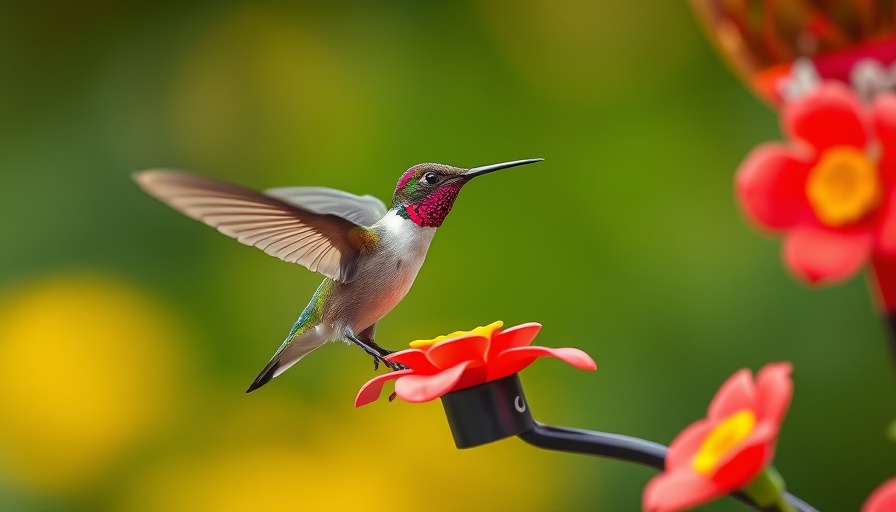
Why Cleaning Your Hummingbird Feeder Matters
Hummingbird feeders are delightful additions to any garden, attracting colorful visitors that add life and beauty to our outdoor spaces. But did you know that keeping these feeders clean is crucial not just for aesthetics but for the health of the birds? Dirty feeders can lead to sickness in these tiny avians and ultimately deter them from visiting your garden. Regular cleaning removes mold, bacteria, and the remnants of old nectar that can quickly become a breeding ground for harmful pathogens. So, let’s dive into the importance of feeder maintenance and how best to achieve it!
Step-By-Step Guide to Cleaning Your Feeder
Cleaning a hummingbird feeder doesn’t require a chemistry degree—just a few simple steps. First, ensure the feeder is empty. Then, dismantle the feeder, remove the parts, and soak them in warm, soapy water. A soft brush can help remove built-up grime. Rinse thoroughly with hot water, ensuring no soap residue remains; hummingbirds are sensitive to even the slightest trace of detergents. Finally, let the components air dry completely before refilling with fresh nectar. Voila! You’ve got a clean feeder ready to welcome your feathered friends.
Best Practices for Storing Nectar
After successful cleaning, you’ll need to prepare delicious nectar that hummingbirds can’t resist! Mix four parts water to one part granulated sugar, boil the solution to eliminate impurities, and allow it to cool before pouring it into the feeder. Store extra nectar in the fridge for up to a week—just make sure to label it to avoid any mix-ups with your cooking ingredients! Keeping the nectar fresh is vital for the health of your visiting birds.
Common Misconceptions About Hummingbird Feeders
While many assume that all nectar is the same, this couldn’t be further from the truth. Ready-to-use nectar sold in stores often has artificial colorings and preservatives—both of which can be detrimental to the birds. Stick to homemade nectar; it’s simple and better for the health of your visitors. Additionally, some believe leaving feeders out year-round can lead to dependency in the birds. However, in colder climates, it’s about providing a safe food source during migration seasons when natural food is scarce.
Insights into Hummingbird Behavior
Understanding the habits of these tiny birds can enhance your feeder’s effectiveness. Hummingbirds are highly territorial, which means competition can be fierce. Placing more than one feeder around your yard can help ensure that all your feathered friends get their fill, without bullying each other away from a single source. Additionally, plant native flowers that attract hummingbirds—this encourages them to make your yard their favorite pit stop.
When Is It Time to Replace Your Feeder?
Even with regular cleaning, age can take a toll on a hummingbird feeder, making it less appealing to our winged friends. A faded, cracked feeder can reflect poorly on your hosting abilities. Consider replacing it if the feeder shows signs of wear or if cleaning doesn’t restore its original charm. An aesthetically pleasing feeder not only attracts birds but also enhances your garden’s visual appeal.
Conclusion: Caring for Our Feathered Friends
Cleaning and maintaining your hummingbird feeder is a rewarding endeavor that ensures the wellbeing of your avian guests. The joy these tiny creatures bring to our spaces can be profound, and simple actions like regular cleaning contribute significantly to their health and happiness. So, roll up your sleeves, get that soap and water ready, and watch as your garden turns into a hummingbird haven!
 Add Row
Add Row  Add
Add 



Write A Comment